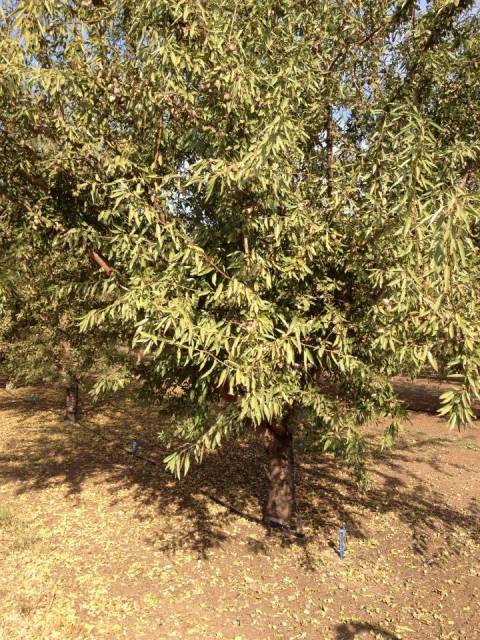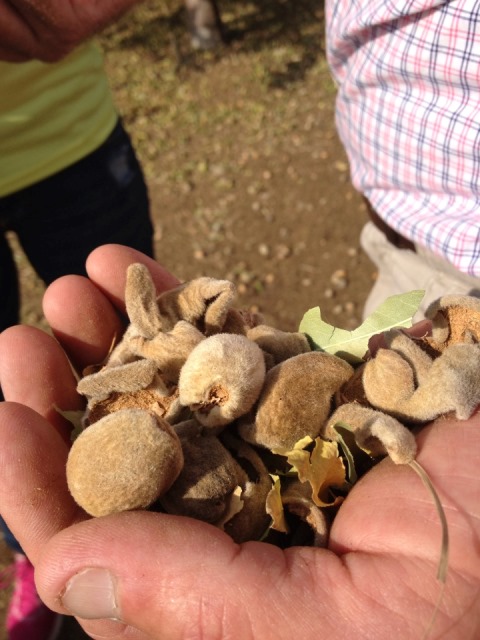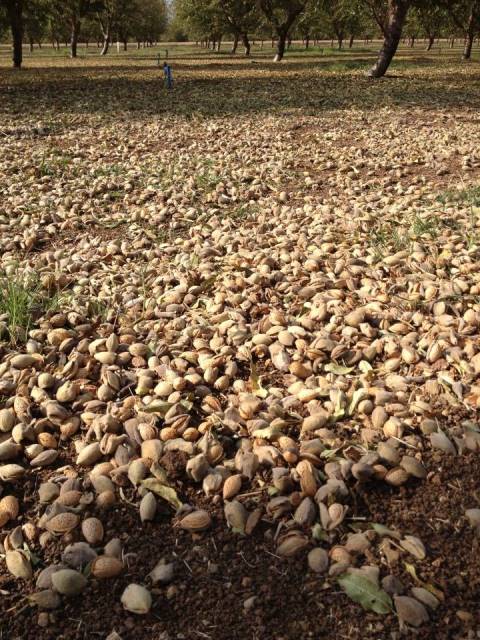I was invited by the California Almond Board to tour an almond orchard last week in Lodi, California. It was an awesome experience and I learned a lot about how almonds are grown and how they can help keep your heart healthy.
If you’ve never visited an almond orchard, this is what it looks like:
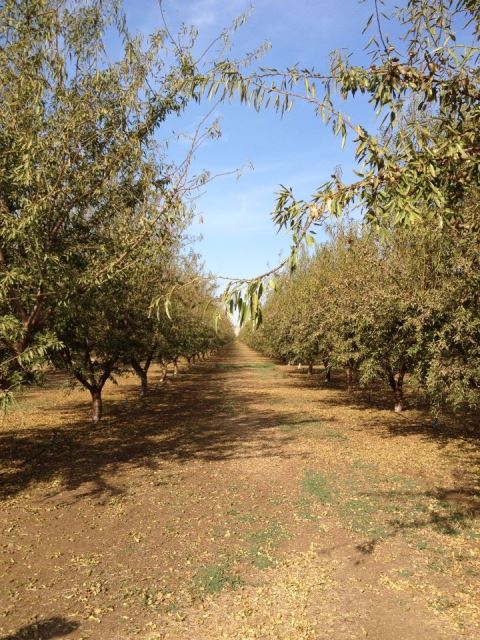 It’s basically rows and rows and rows of perfectly placed almond trees. It’s really quite breathtaking to see it in person.
It’s basically rows and rows and rows of perfectly placed almond trees. It’s really quite breathtaking to see it in person.
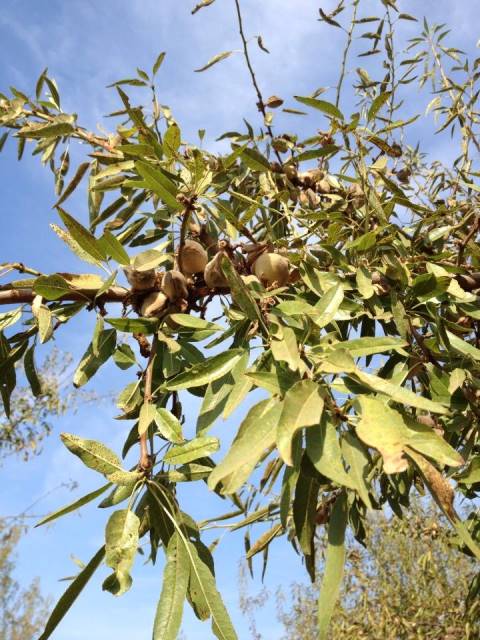 On each one of these trees, almond seeds are growing inside a fuzzy hull.
On each one of these trees, almond seeds are growing inside a fuzzy hull.
These almonds are fresh off the trees.
Almonds are actually in the rose family and are often called “the queen of the rose family.” The fuzzy hull around the almond nut feels kind of like a peach, and that’s because other family members of the almond are the peach (and the apricot).
Once the almonds are ready to be “picked” a machine comes around and shakes them off the trees. Here’s a quick video.
Once off the trees, the almonds lay on the orchard floor for 5-10 days to dry out. Then the “sweeper” comes to pick them up and take them to the processing plant where they’re separated, hulled, shelled, sorted, sized and packaged. The fuzzy hulls are sold to dairy farms for animal bedding or burned for biofuel.
10 Fun Facts About Almonds:
- Almonds need really hot weather and cool winters to grow
- They are 100% reliant on wild bees and honey bees for crop pollination — No bees, no almonds
- Almond growers rent bees for pollination and it’s one of the most costly issues for growers
- Bees are fussy little fellows; they don’t work in the rain, at night, in the early morning, or when there’s frost
- The immature green almond can be preserved and pickled — some consider it a delicacy
- Of the 8 major varieties of almonds, the Nonpareil are the most prized (all have the same nutritional profile)
- There are 98 published research papers to date (with 19 more in progress) on the health effects of almonds, in particular their effect on heart health, diabetes and weight management
- Almonds were one of the first foods awarded a qualified health claim in the US
- Almonds help to slow absorption of sugar and carbs
- Recent sudies show almonds eaten mid-morning can help moderate your blood sugar throughout the day
That’s all I’ve got for you on almonds. I want to thank the California Almond Board for inviting me on this really fun and informative trip.
Oh, and one more fun little note: the tour guide on our almond bus referred to almonds as “a-monds.” With the “a” pronounced like the “a” in animal. a-monds.
I notice that I say “awmonds” with no l.
How do you say almonds?
